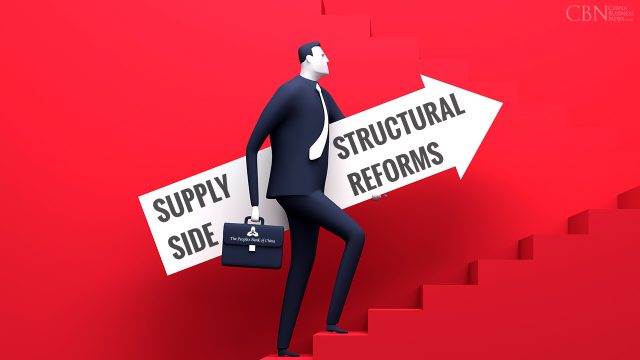2015年11月20日,在中央财经领导小组第十一次会议上(at the 11th meeting of the CPC Central Leading Group for Financial and Economic Affairs),习近平首次提出了"供给侧改革(supply-side reform)"这一重要理念。"供给侧"是相对于"需求侧(demand-side)"而言的,它是从供给和生产端入手,通过鼓励企业创新、促进淘汰落后(decommissioning of obsolete manufacturing)、化解过剩产能(less overcapacity)、降低税费负担等方式,解放生产力(unleash productivity)、提升竞争力(maintain a competitive edge),从而促进经济发展。

"供给侧改革"更加注重经济结构的优化,核心在于提高全要素生产率(enhance the efficiency of all contributing factors),政策手段包括简政放权( streamline government and delegate powers)、放松管制、金融改革、国企改革、土地改革、提高创新能力等。"供给侧改革"的提出,旨在加大结构性改革力度,进一步释放内需潜力、激发供给活力(Greater emphasis on supply-side reform will fuel domestic demand and replenish supply),以创新供给带动需求扩展(Innovation on the supply-side can generate demand),以扩大有效需求倒逼供给升级(heavier demand can in return generate improvements in supply),实现稳增长和调结构互为支撑、互促共进(steady growth and structural adjustment proceed in parallel)。
